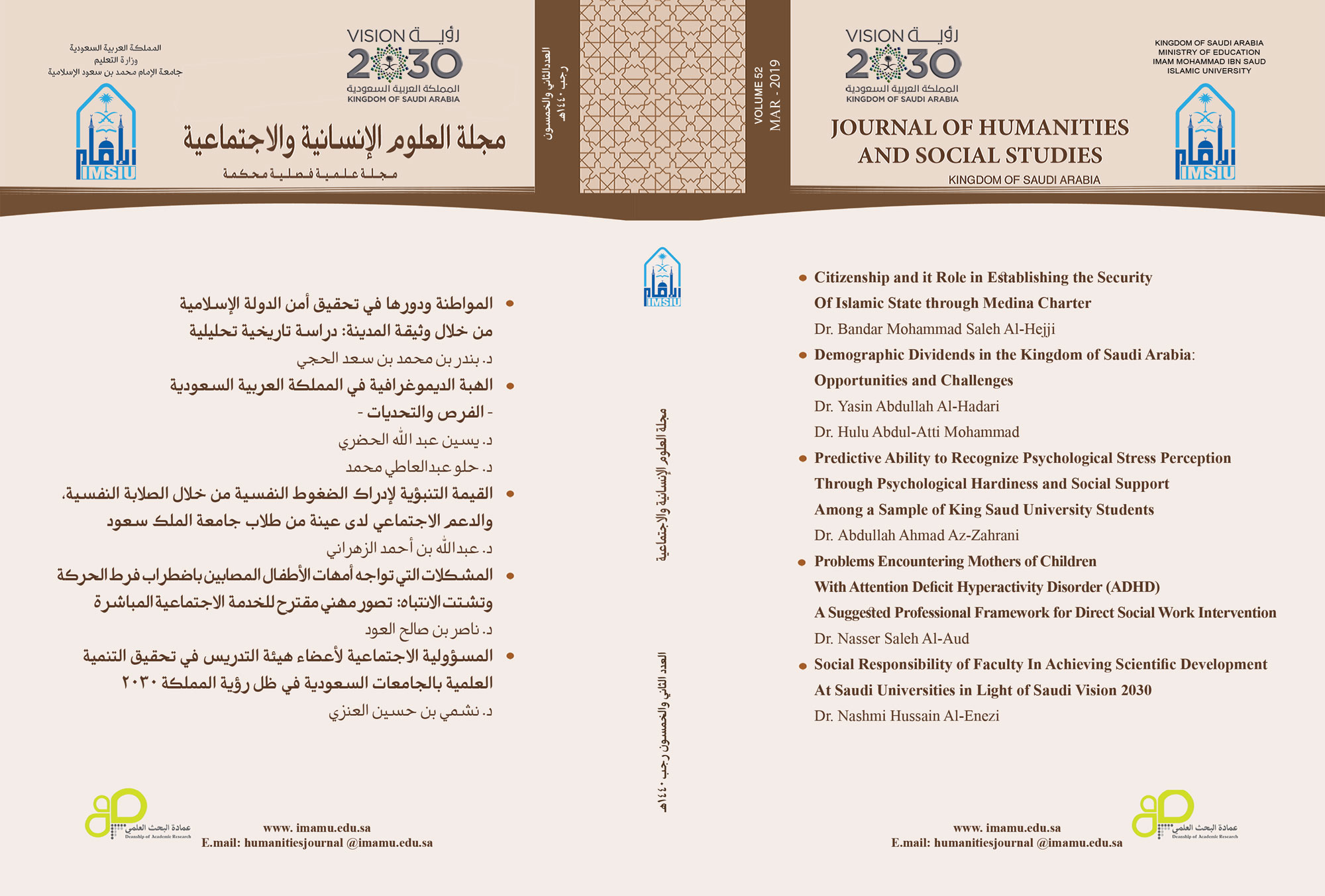Problems Encountering Mothers of Children With Attention Deficit Hyperactivity Disorder (ADHD): A Suggested Professional Framework for Direct Social Work Intervention
Keywords:
Social service, clinical social service, ADHD, social problems, direct social service, special needsAbstract
Attention Deficit Hyperactivity Disorder (ADHA) is one of the most important behavioral disorders facing the family in Saudi Society. Researchers have become increasingly interested in this disorder, because of its increasing prevalence and its impact on the development of the child and his/her family and the surrounding community. Taking care of children suffering from ADHD is very challenging for parents, especially the mother. The study aimed to identify the most important problems experienced by mothers of children with ADHD, which included a number of social and psychological problems. In addition, the study aimed at reaching a proposal from the perspective of clinical social service to support the mothers of children with this disorder through professional mechanisms and procedures.
The researcher used in his descriptive analytical study the social survey method. The study consisted of a sample of (85) mothers of children with ADHD in several daycare centers in Riyadh. The study found that there are several problems faced by the mothers of children with ADHD, the most important of which is the child's need for supervision and continuous guidance (95.3%) reported this as a social problem, while the problem of feeling sad due to continuous thinking about the future of the son ranked among the most important psychological problems by (84.7%). In addition, there is the difficulty of communicating with specialists in the forefront of service and specialists in education (100%). In the framework of occupational problems, mothers reported that they have a dilemma of finding specialists in training and rehabilitation (83.6%) of the sample.




